How To Harness Train A Cat In 7 Easy Steps
Want to let your cat outdoors - but also keep them safe by your side? Cat harness training might be the solution. Here's how to get your cat to wear a harness in just 7 steps - and what to do if they slip out of it.
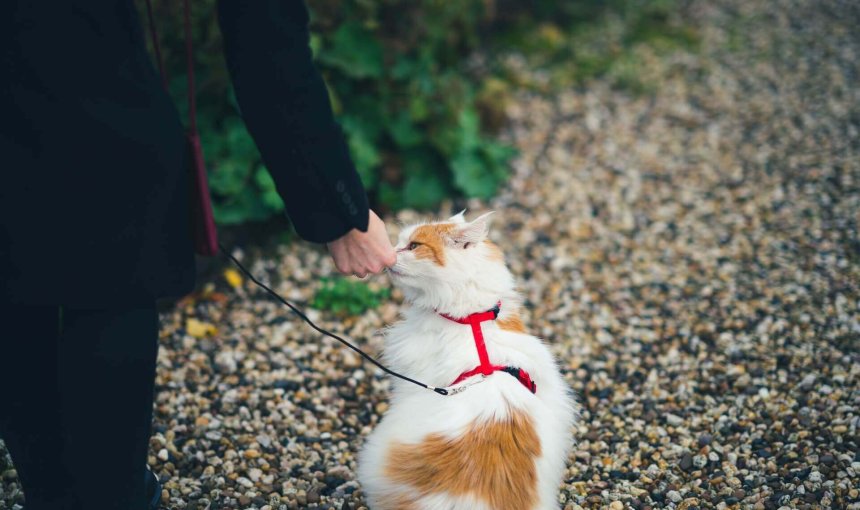
As a loving cat parent, you know your feline friend is likely to get bored being cooped up indoors all day. (No matter how much of an indoor cat they might be.) Because much like dogs, cats also need a good dose of the outdoors – plus the physical and mental stimulation – to stay healthy. But like dogs…how might cats respond to protective gear like collars or harness? You might’ve stumbled on here, wondering: how to harness train a cat?
While cats do tend to have a mind of their own, training them to adapt to “new” behaviors – like adjusting to a harness – is 100% doable. With a little patience and a ton of praise, many cats can and do get used to protective gear, like harnesses and even cat collars.
So here’s a post covering how to harness train a cat in 7 easy steps – and everything else you’ve ever wanted to know about cat harness training.
- Are harnesses safe for cats?
- Pros & cons of cat harnesses
- Choosing the right cat harness
- How to harness train a cat in 7 simple steps
- How to put on a cat harness the right way
- What to do if your cat does not respond well to the harness
- More tips for cat harness training
- Stay on top of your cat harness training with these tips
Are harnesses safe for cats?
Before you put a harness on your cat, you probably want to know – are harnesses really safe for cats? Or could they pose some threat to your feline friend?
It’s a perfectly understandable concern – since some cat collars (especially those without a safety breakaway or release mechanism) have been associated with cats getting seriously hurt. In the worst case scenario, an ill-fitting or inappropriately used collar or harness could cause strangulation or even death. So it’s important to make safety a number one priority when using a harness or collar on your cat.
Harnesses are generally safe for cats, as long as you follow the safety tips below:
- Choose a harness that is the appropriate size for your cat.
- Adjust the straps so that the harness fits comfortably snug on your cat (with space for 1-2 fingers between the harness and cat).
- Always attach the leash to the harness, not a cat collar.
- Be sure to supervise your cat when they’re wearing the harness.
- Only use the harness on walks with your cat; it should never be left on your cat 24/7.
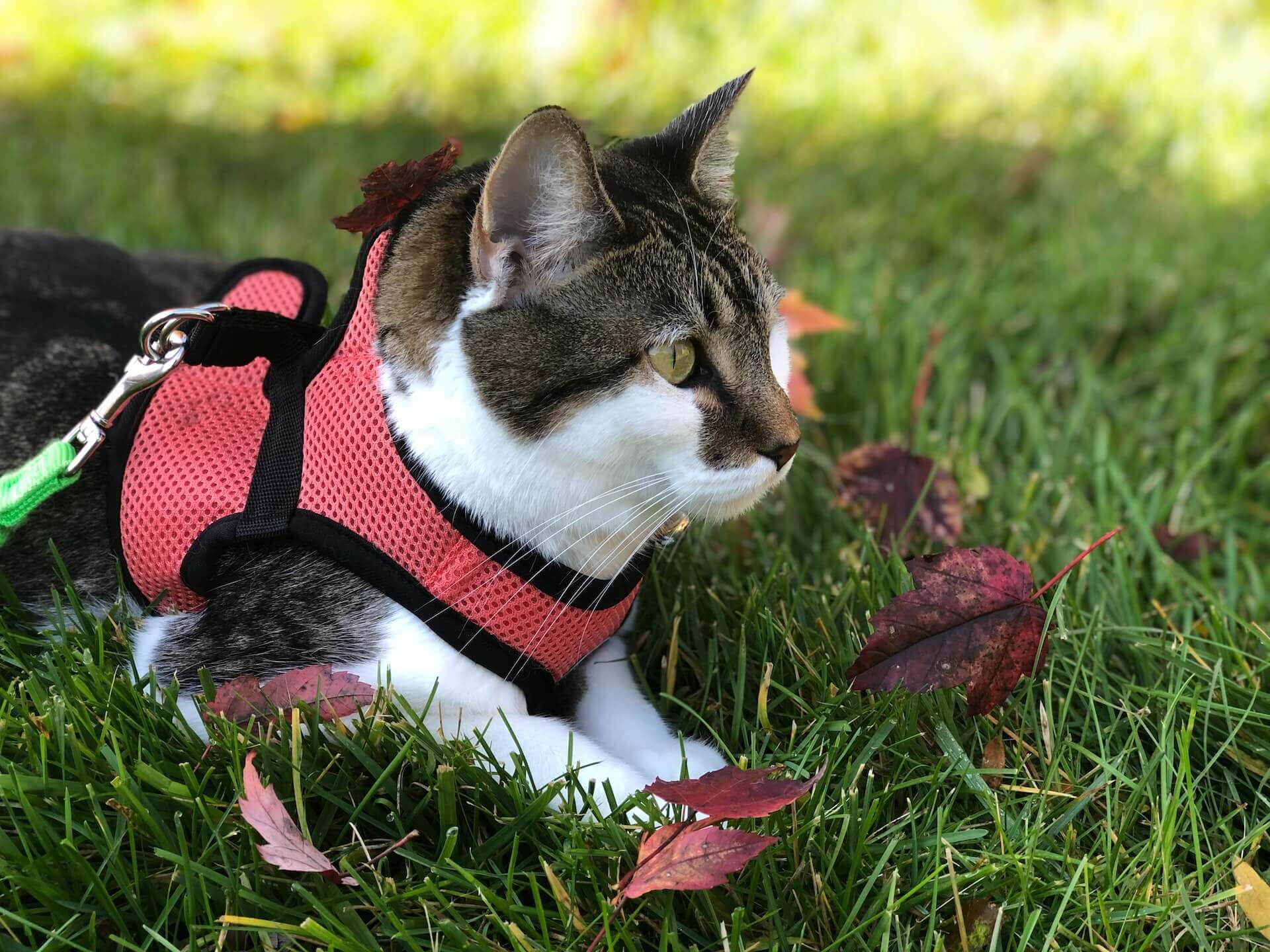
Don’t rely on a harness alone for your cat’s safety
⚠️ Importantly: plan ahead for your cat running off – even if they’re harnessed. Cats run away for all sorts of reasons. (Like smelling a female in heat nearby, sensing some prey animal in the distance, or because they got spooked by some other pet or person.)
And it only takes a few seconds of negligence for your cat to have disappeared miles away from safety. (Or slip out of a harness.) Where they’re at risk of getting hit by a car, injured by another animal or person – or even kidnapped by pet thieves.
Which is where tracking your cat’s every step in real-time via GPS can be an absolute lifesaver. Just switch on your Tractive device’s LIVE mode – and follow your runaway cat’s every step.
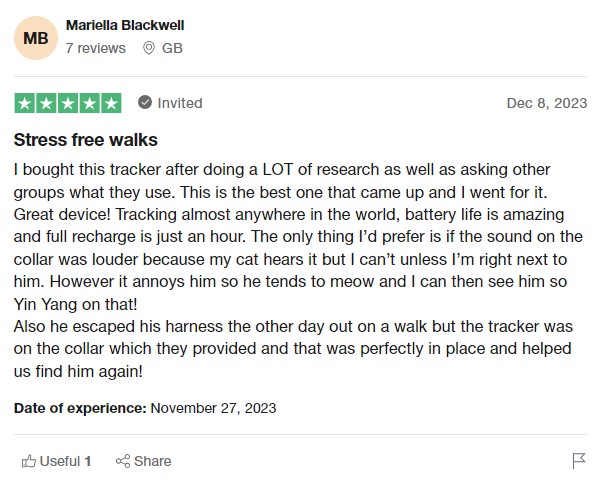

Know everywhere your cat goes
See where they are in real-time, no matter how far they go. Get alerts if they roam too far home. Find out where they’ve been and discover their favorite spots. Let others track with you.
Pros & cons of cat harnesses
When it comes to cats wearing harnesses, there are several pros and cons.
Pros
The biggest advantage of training your cat to wear a harness is that they can enjoy safe access to the outdoors without all the risks associated with free-roaming. Cats on a leash and harness will be less likely to face accidents and injury from other cats, wildlife, or cars. Plus, they’re less likely to get lost.
💡 For extra security, make sure you’ve gotten your cat microchipped. Besides being a legal requirement in most countries (and US states), it works like a permanent ID tag for your cat. And can help a vet or local shelter identify you as the rightful parent in case your cat gets lost.
(That and a GPS Cat Tracker, so you can have peace of mind while kitty explores.)
Cons
When it comes to disadvantages of cat harnesses, they seriously limit your cat’s movement, including their ability to follow their own natural instincts.
- For example, wearing a harness will interfere with a cat’s ability to engage in fight or flight, should they come across a threat in the environment.
- They’ll also be restricted in terms of hunting or stalking prey.
- Moreover a cat wearing a harness is more likely to get caught on something – like a tree or fence. Which would increase their risk of injury if left to explore the outdoors alone.
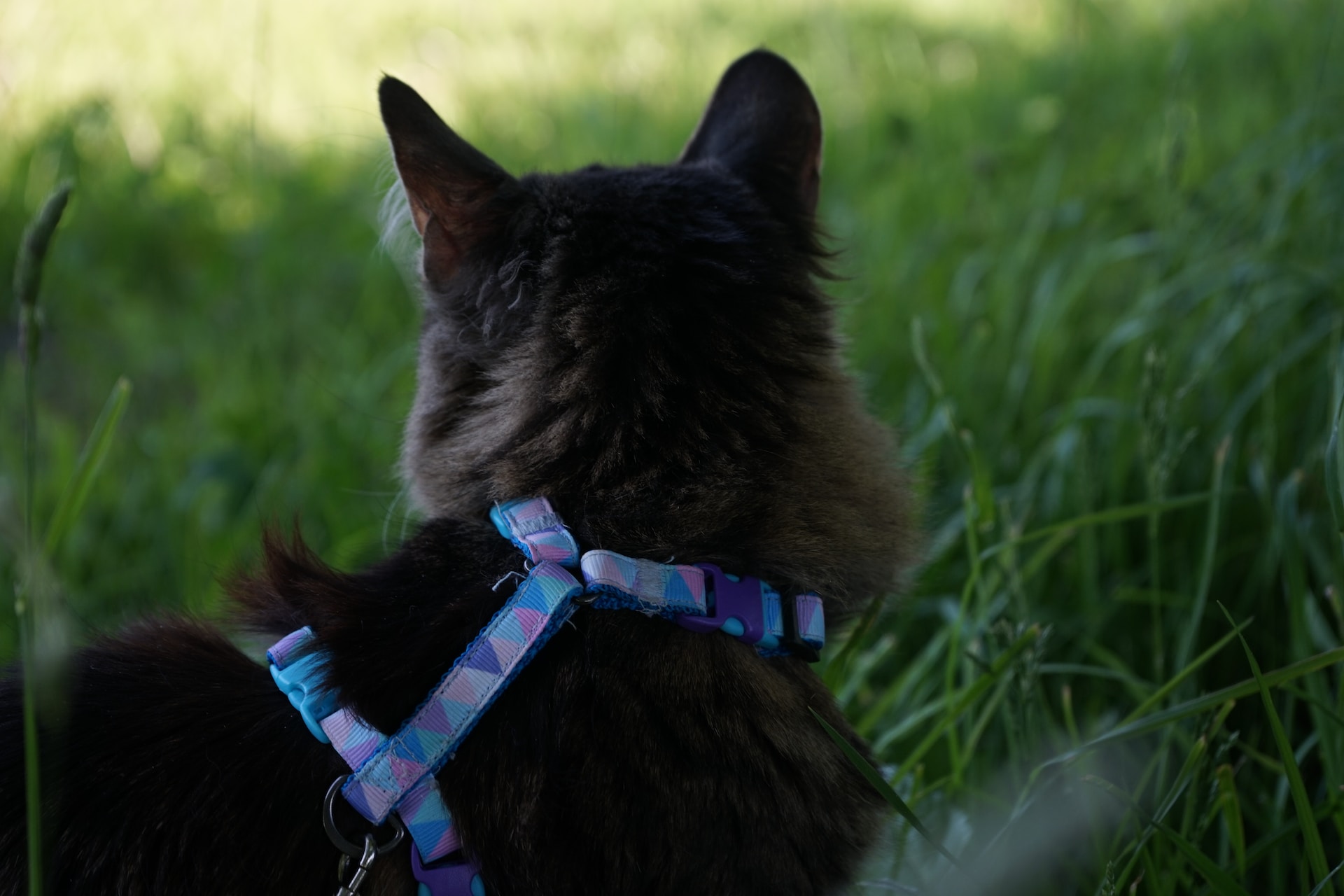
Because of these restrictions, your cat might attempt to slip out of their harness or escape somehow. Which is why they should only wear harnesses for a limited time during the day (during walks with you) when they’ll be supervised. Keep an eye on your cat and watch out for any signs of distress or anxiety that might be caused by wearing the harness.
However, exploring safely with you and a harness can bring a lot of joy and enrichment to your cat’s life.
Choosing the right cat harness
Now that you’re ready to start cat harness training, the first step is to choose the right cat harness. When it comes to choosing a safe and comfortable cat harness, there are several things to consider.
Types of cat harnesses
Not all cat harnesses are made alike. Some are minimal in terms of fabric and contact area; others offer more coverage and a more secure fit. You can choose from these types of cat harnesses:
- figure-eight style harness
- H style harness
- vest harness (see photo above)
- jacket harness (covers even more of the cat’s body than a vest harness)
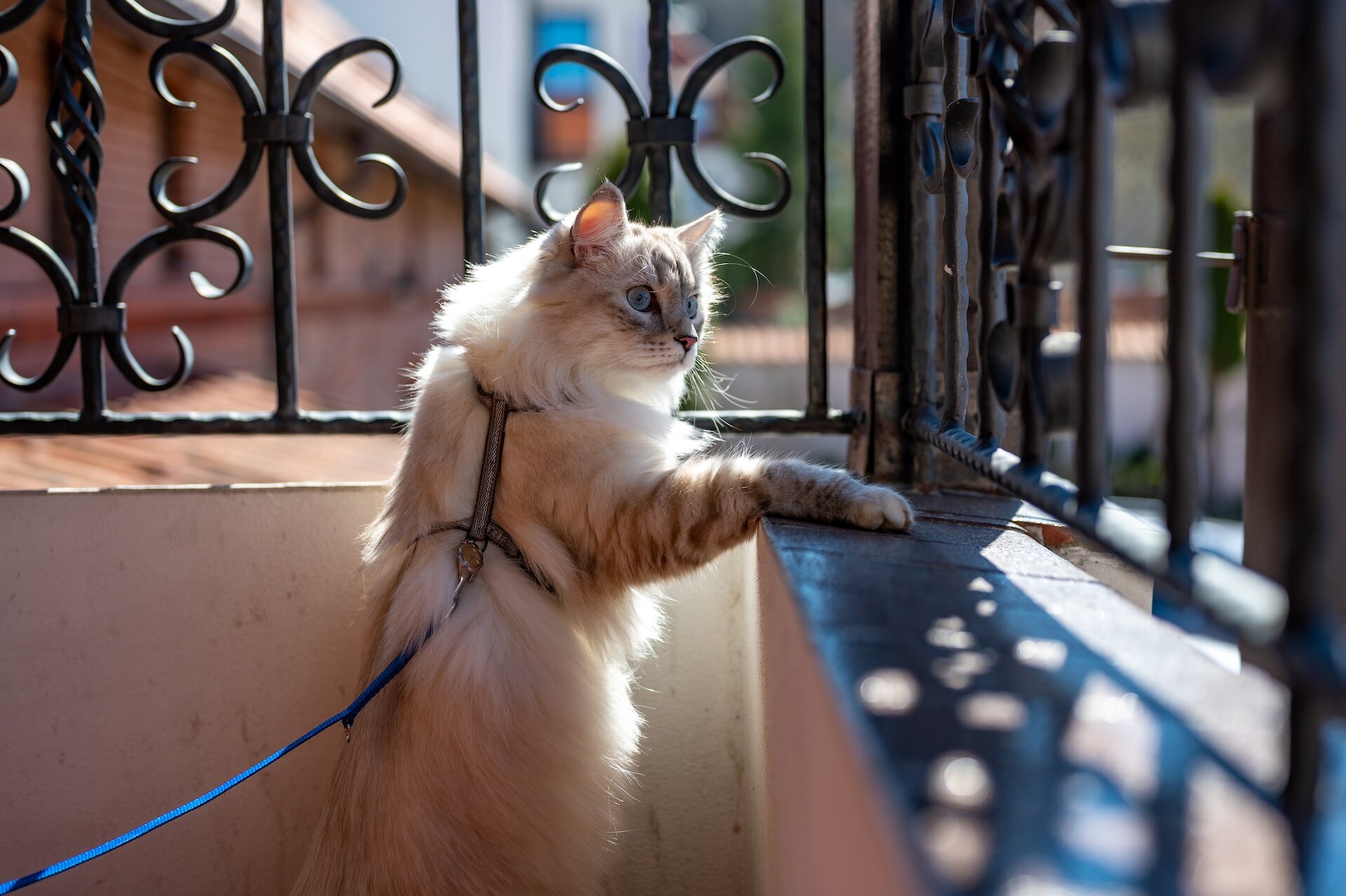
Cat harness sizes
Cat harnesses come in different sizes, so be sure to choose the correct size for your cat. Note that sizes small, medium and large can vary in terms of actual size among cat harness brands.
For best results, measure your cat before buying a cat harness. Take a flexible measuring tape and measure around your cat’s chest, just behind their front legs.
Best cat harness material
The material should be soft and comfortable for your cat, so avoid any materials that are known to irritate your feline.
How to harness train a cat in 7 simple steps
Once you have your cat harness, you can follow these seven steps to train your cat to wear it comfortably.
1) Introduce your cat to the harness
Let your cat sniff and check out the harness first. The goal is to help them perceive it as non-threatening – which might take a while, given the “snakey” appearance some harnesses can have!
2) Let your cat get familiar with the harness over a few weeks
Leave the harness sitting beside the cat’s bed or food bowl for about 1-2 weeks before you ever put it on. This way, your cat can infuse the harness with their scent, and begin to recognize it as a familiar object.
3) Give cat clicker training a whirl
Clicker training is a fun, practical training method built on positive reinforcement. Here’s how it works in a nutshell:
- Use a clicker – or any small object that makes a gentle “click” noise. Familiarize your cat with this noise before getting started.
- Now when your cat performs a “good” behavior, sound off your clicker…
- …and immediately give them a treat. (Or pets or a hug.)
Over time, this helps your cat learn that the sound of the clicker = something good coming up. So you can slowly help them build a positive connection to their new harness as well.
Read more: Cat Clicker Training: Tips, Tricks & Best Practices
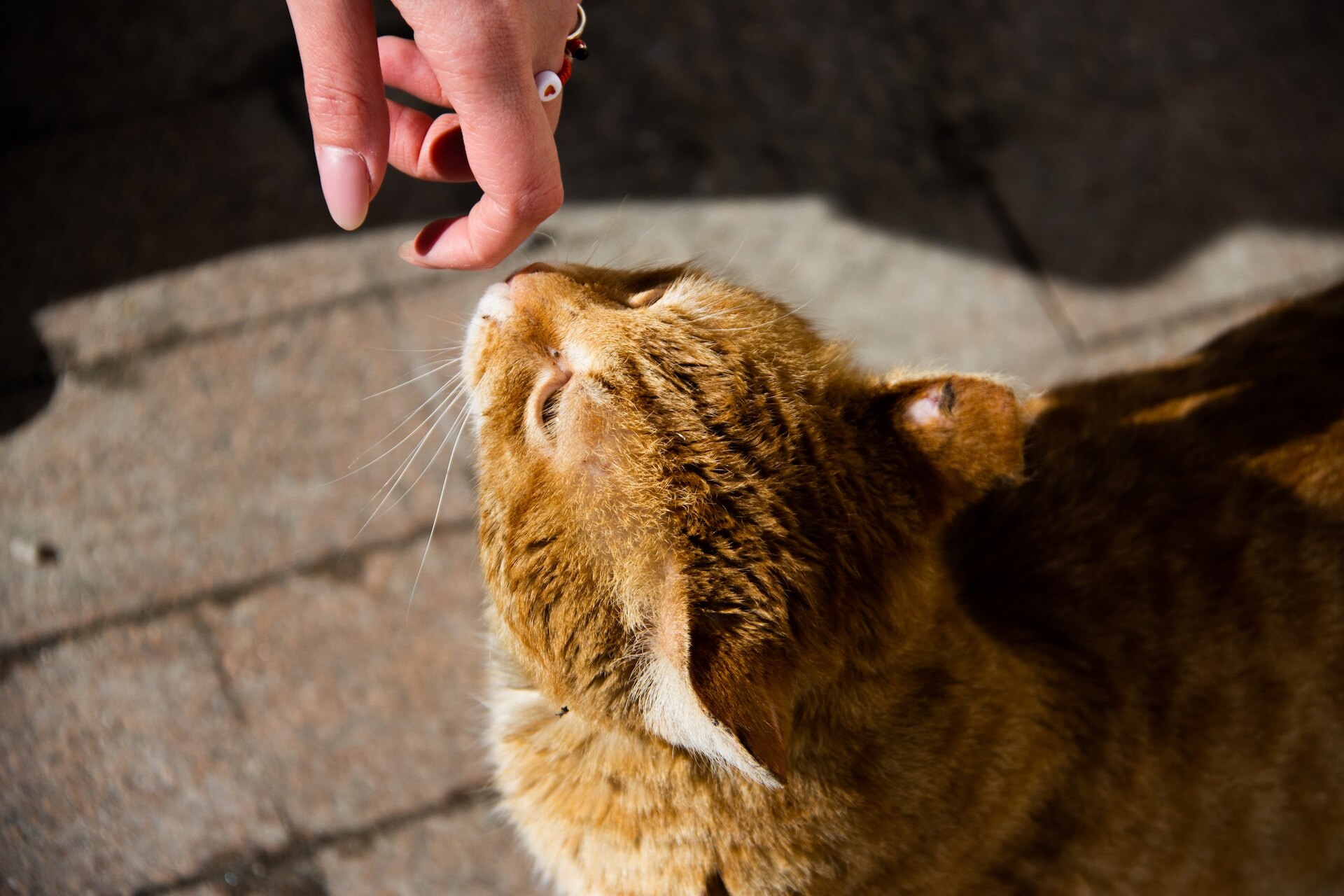
4) Gently put the harness on your cat
Skip ahead to our section on how to put a harness on your cat the right way. But remember to go slow and take it one step at a time.
Rushing your cat might just stress them out – and even trigger a hiding or escape attempt if they’re spooked.
5) Reward your cat plenty
Whenever your cat cooperates, you want to ensure you’re giving them all the attention, praise, pets, and treats they can get. If your cat doesn’t, ignore this behavior. Over time, you want to help them build a positive association with wearing the harness. (Just remember to be consistent when you reward them.)
6) Monitor your cat’s behavior
Keep an eye on how your cat responds to wearing the harness. If your cat acts normally after the harness is on, continue to step seven. In case your cat reacts poorly to wearing the harness, read how to handle this below before moving on to step seven.
7) Build practice with your cat wearing the harness
Allow your cat to wear the harness for 10-15 minutes per day and provide them with plenty of positive reinforcement and healthy distraction while doing so. Soon, you can extend the time your cat wears the harness and start taking short walks outside or in the garden.
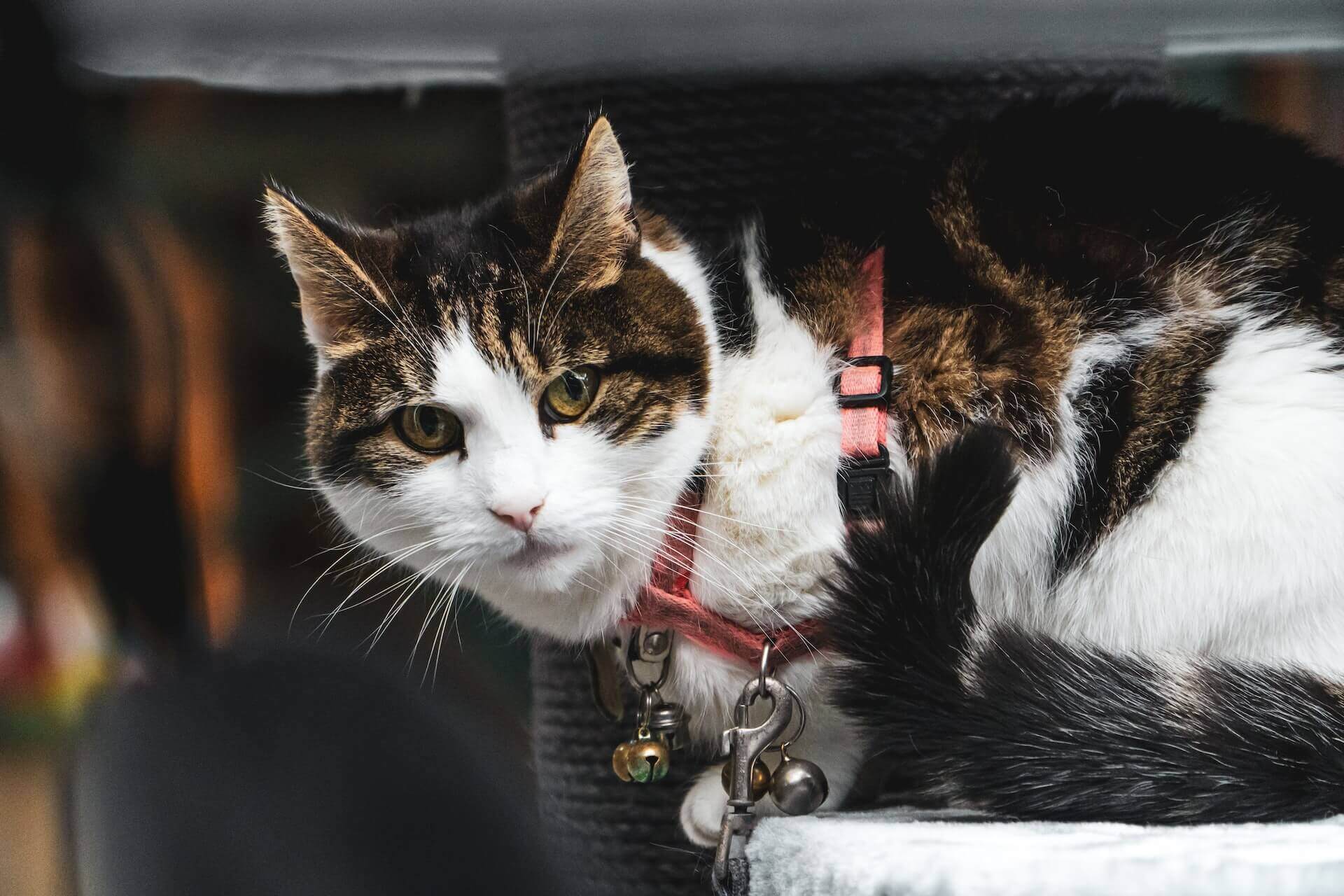
How to put on a cat harness the right way
Follow the instructions below to put a cat harness on your cat correctly.
If your cat lets you, you can place a hand over their chest to stop them from moving while you attach the harness. Alternatively, you can give them food to distract them while you put on the harness.
- First, take a moment to orient yourself with the harness. Distinguish between the smaller head loop and the larger chest loop. Unbuckle or open the harness where necessary.
- Place the harness on your cat.
- Figure-eight or H style cat harness: Place the smaller loop over the cat’s head and close the buckle if necessary. The ‘waist’ of the figure 8 shape or the connector of the H style harness should lie on the cat’s back, between the shoulders. Next, fasten the buckle to close and attach the larger loop around the cat’s chest.
- Vest or jacket harness: Place the harness on your cat’s back or underneath its stomach depending on the style. Fasten the neck and chest buckles or slips. Make sure that the leash latch is on the cat’s back.
- Be sure to straighten out any twists so that the harness can sit comfortably on your cat.
- Adjust the length of the straps and fit of the harness until it is snug, but still leaves room for you to fit about two fingers between the cat and the harness.
To see a cat harness fitting demonstration, check out the video below:
What to do if your cat does not respond well to the harness
If your cat seems confused or stops moving after you put the harness on them, they may need a little extra time to get comfortable wearing the harness. Here’s what you can do in that case:
- Get their favorite toy and move it around to get their attention. This should help them forget about the harness and move around again.
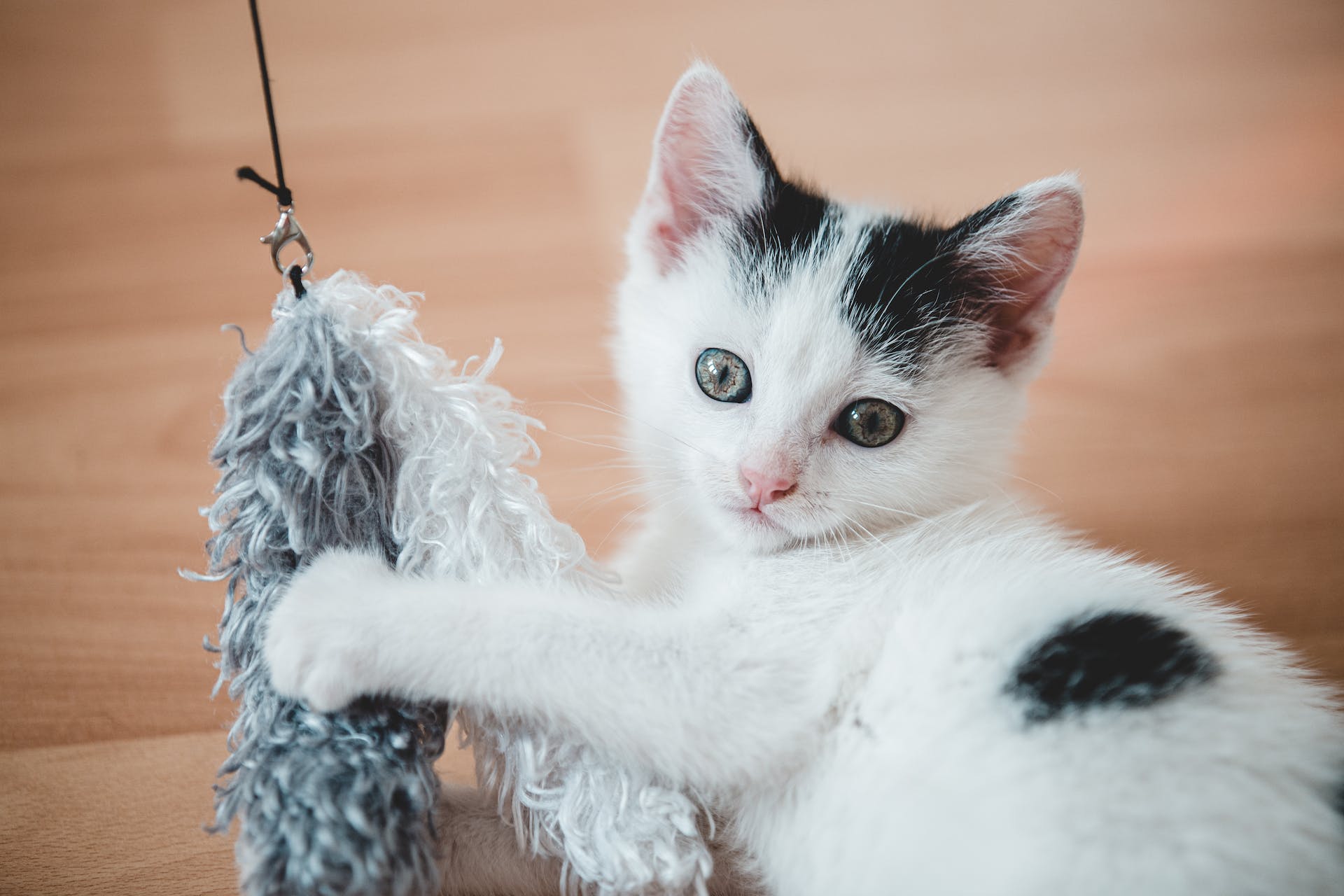
- Feed your cat before, during, and after putting on the harness.
- If this still doesn’t work…
- keep the harness-wearing sessions short
- give your kitty lots of praise and
- reward them with treats for wearing the harness
This way, they’ll eventually develop a positive association with wearing the harness.
Don’t try to force your cat to wear the harness. Everyone has a bad day, and your cat does too. Warning: if your cat starts to panic, stop the exercise and try again in a few days.
More tips for cat harness training
So that you and your cat can enjoy walking on the leash with a harness, keep these tips in mind:
- Give your cat enough acclimatization time. A harness and leash is a completely new experience for most cats. So be patient.
- Cats have different movement patterns than dogs, so give your cat some space.
- Cats are not long-distance runners. Be careful not to take long walks. 15-20 minutes can be enough at the beginning. You can gradually increase the time. Add small breaks to longer trips and don’t forget to let your cat quench their thirst with water.

- Watch out for possible encounters with birds and dogs. Cats can even react aggressively to strangers of their own kind, so it is best to avoid such encounters. It is recommended that your cat only walks with you at first.
- Choose quiet places for the first walks. Prefer meadow areas instead of busy streets and busy times of the day and avoid dog exercise areas.
Stay on top of your cat harness training with these tips
With a little patience and lots of love, even the most unlikely cats can get used to wearing a harness. While cat harnesses do restrict some of your cat’s natural movement, they’re still a great way to offer your cat enriching outdoor time while keeping them out of harm’s way.
Above all:
- Start slow and give your cat plenty of time to get comfortable.
- A little praise (and some treats) can go a long way.
- Make sure your cat’s harness is correctly attached.
- Always supervise your cat while they’re wearing a harness.
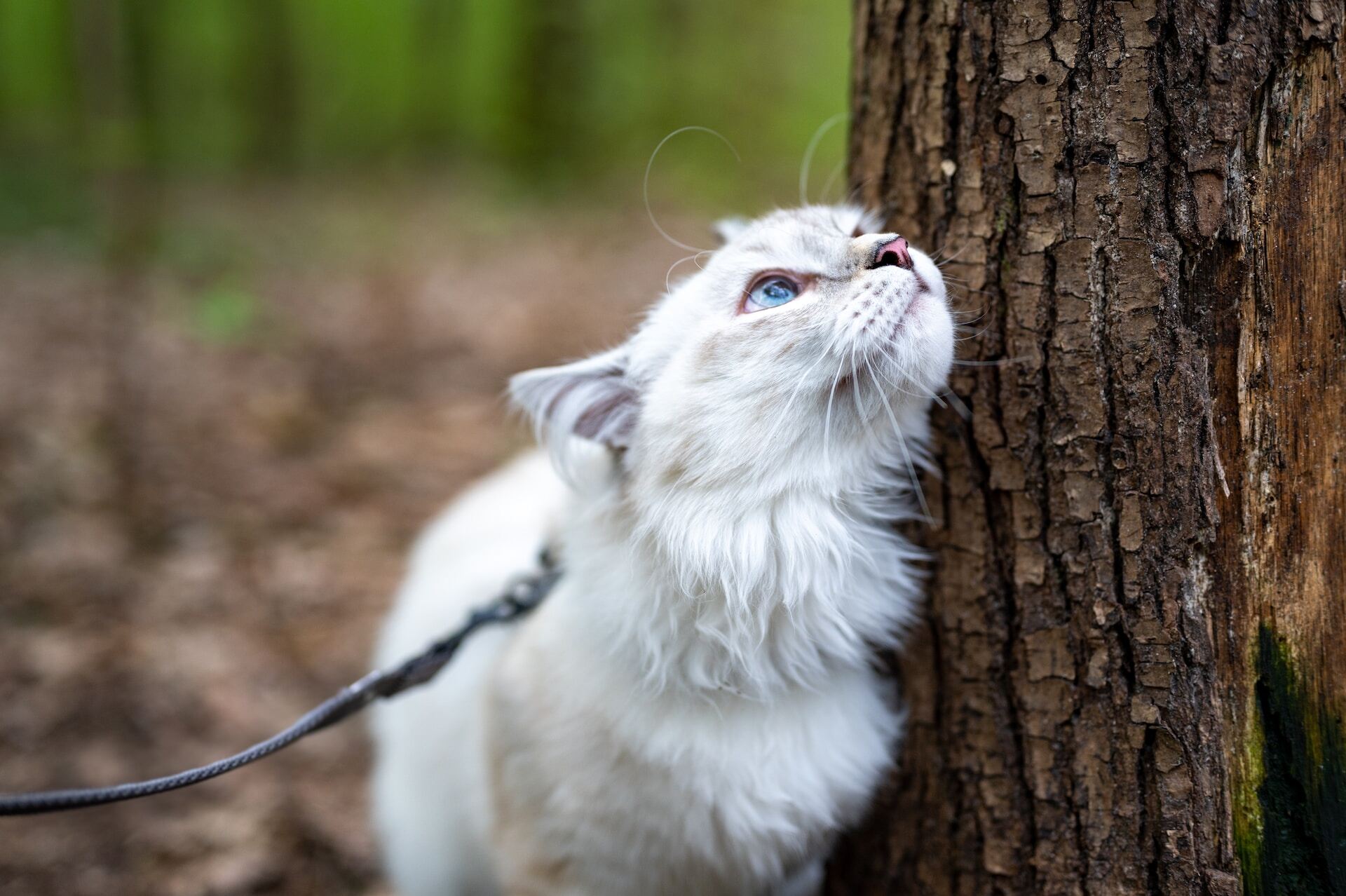
Since outdoor time with a harness may be overwhelming for some cats, they might resist or even slip out of their protective gear.
But with a microchip and GPS cat tracker attached to your cat’s harness or collar, you’ll ensure max security for your feline buddy. Because even with all your planning and prep, your cat might still slip out of their harness and bolt off into the distance, chasing prey. (Or a female in heat nearby.)
And the best part? Tractive trackers are specially built to clip on to harnesses and collars. In fact, the Tractive CAT MINI specifically comes accompanied with a breakaway Rogz safety collar, for cats of all shapes and sizes.

So – where are you taking your harness-wearing cat? Share your adventures with us by tagging @Tractive on Instagram or using the #Tractive hashtag.
For even more tips and inspiration on harness and leash training your cat, check out this video below by Albert & Mia, the Adventure Bengal Cat ❤️
Did you like this post? Share it with a fellow cat parent – and let’s help build a safer, kinder world for our furry friends together.




